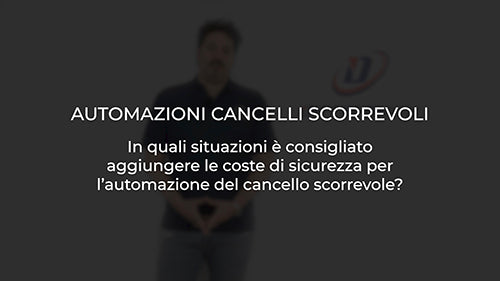In what situations is it recommended to add safety edges for sliding gate automation?
Safety edges are a fundamental element to ensure protection during the automation of a sliding gate. These devices can be installed in various strategic positions, providing additional safety in different contexts.
Use of safety edges
Safety edges can be applied in two main ways:
- On pillars: Installing safety strips on pillars prevents the risk of accidents during the movement of the sliding gate.
- At the top of the gate: Positioning safety edges on the upper part of the gate optimizes protection against potential crushing while the gate is in motion.
When to install safety edges
It is advisable to consider adding safety edges in various situations, including:
- Presence of children or animals: If the sliding gate is installed in areas frequented by children or pets, adding safety edges is essential to prevent accidents.
- Access to public areas: In situations where the gate faces public areas, it is important to ensure a high level of safety to protect users and property.
- Frequent movement: If the gate is used frequently, activating safety edges significantly reduces risks during opening and closing.
Advantages of safety edges
Integrating safety edges into the sliding gate automation system offers several benefits:
- Prevention of accidental crushing.
- Increased safety for users.
- Simplification of maintenance, reducing the risk of gate damage.
In conclusion, adding safety edges for sliding gate automation is highly recommended in situations where user safety is a priority. These devices not only reduce risks during operation but also contribute to a safer and more secure user experience.

